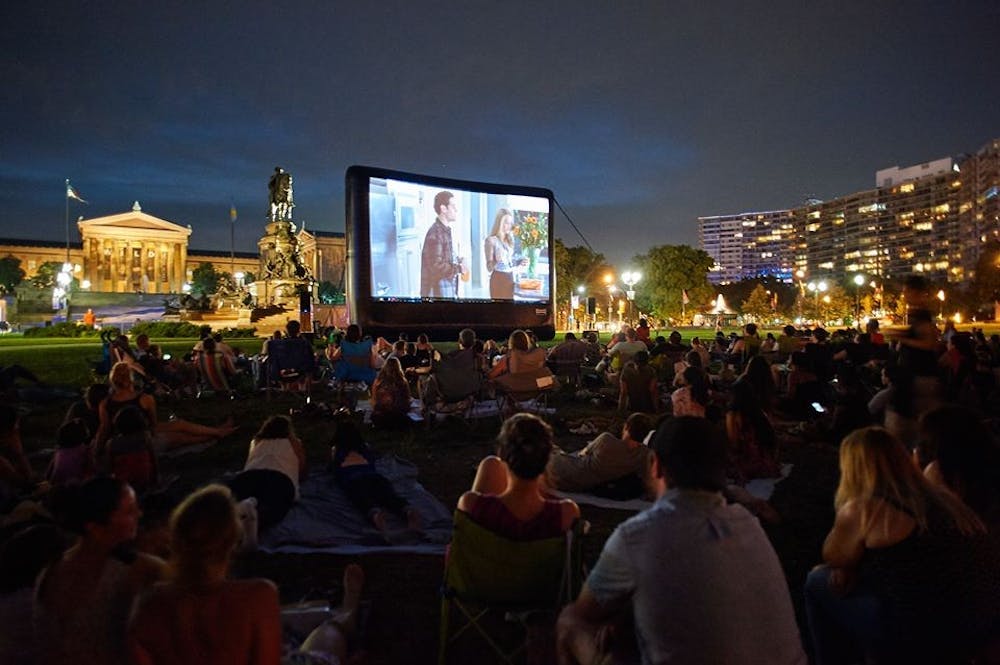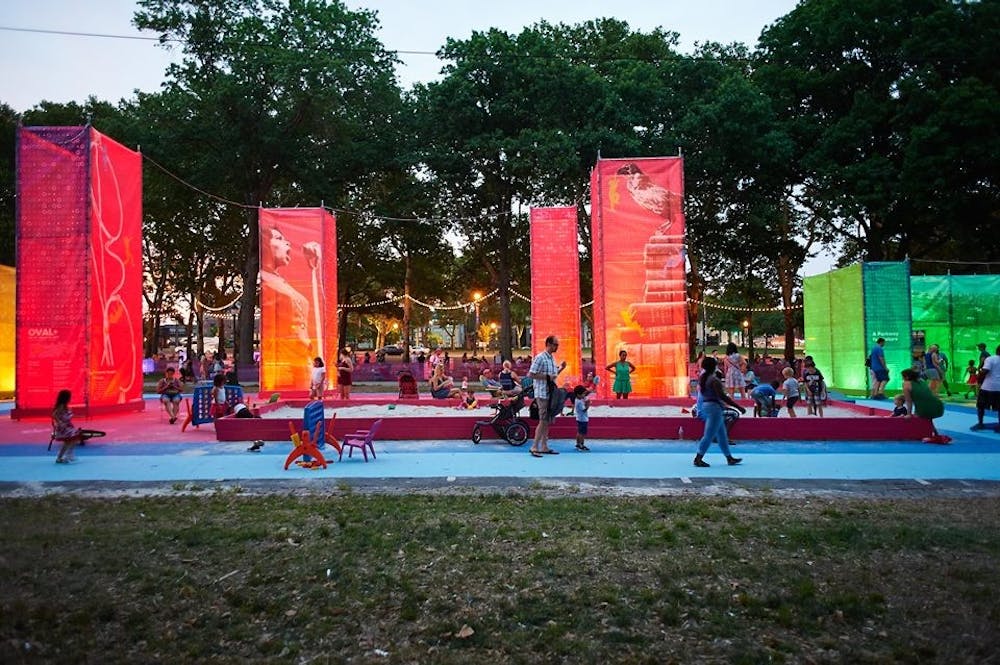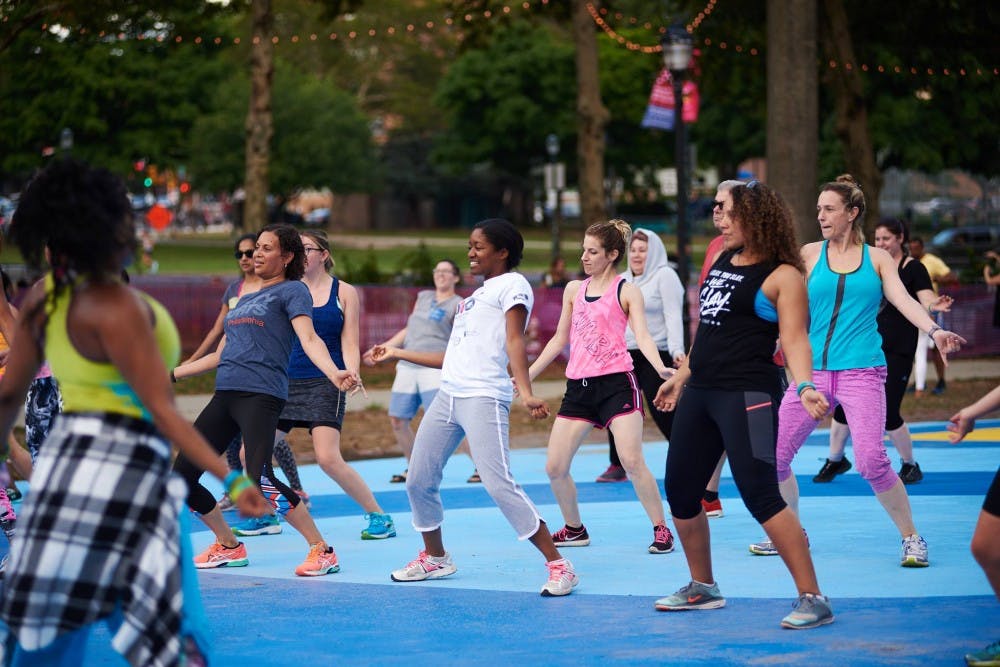
Faculty from the School of Design helped to create a seasonal “pop-up” space transforming Benjamin Franklin Parkway into a public park.
Five years ago, Fairmount Park Conservancy and Philadelphia Parks and Recreation constructed partnered for the first time to transform Eakins Oval, a former parking lot located in the heart of Benjamin Franklin Parkway, into a seasonal "pop-up" space over the summer.
In February 2017, FPC and PPR teamed up with Philadelphia and Chicago-based design firm, PORT Urbanism, to create a large, robust version of this “pop-up” called “The Oval+.”
Christopher Marcinkoski, a partner at PORT and associate professor at PennDesign, told PennDesign that “[the] project initially was tasked with thinking about a kind of expanded version of what they had done in years past.”
Over the summer, The Oval+ hosted events featuring games, food trucks, a beer garden, as well as graphic installations rising 24 feet in height. These installations were designed to create areas for visitors to engage with their environment, enjoy art and learn about culture. Many of the installations also posed a larger question for visitors to consider: “What’s your Parkway, Philly?”

PORT, along with the help of PennPraxis, the center for applied research, outreach, and practice at PennDesign, conducted approximately 500 interviews with visitors in order to cultivate ideas and determined the future for Oval+.
PORT partner and 2008 PennDesign graduate Megan Born said the aim of this outreach was to learn from Philadelphia residents about ways in which they would like to transform the urban space around them.
“How can we use them to help people really open their minds up to see the possibilities in this public space that they didn’t see before?” Born said.

The eventual goal of the architects behind "The Oval+" is to reconfigure the Parkway to be a pedestrian friendly, permanent urban park, while keeping the needs of nearby neighborhoods in mind.
“What’s fascinating about the Oval for us is that it has more audiences and expectations than your typical public space,” Marcinkoski said. He added that because of the nature of the Parkway, any transformation of the Oval has to accommodate the needs of neighborhoods such as Fairmount, Logan Square and Spring Garden.
The park also has to bear in mind the composition of people who might use the space, which is likely to include residents from nearby neighborhoods, as well as tourists and visitors, who might just be in Philadelphia for the day.
This is not the first time PennDesign has taken steps to reinvigorate Philadelphia’s urban landscape. In 2013, PennPraxis recommended a series of actions to reinvent the Benjamin Franklin Parkway into a “21st century public space.”
On top of that, two years ago, PennDesign started organizing Social Impact Projects, which provides grants for students with proposals on how to use their design abilities to help disadvantaged communities in the city.
The Daily Pennsylvanian is an independent, student-run newspaper. Please consider making a donation to support the coverage that shapes the University. Your generosity ensures a future of strong journalism at Penn.
Donate




